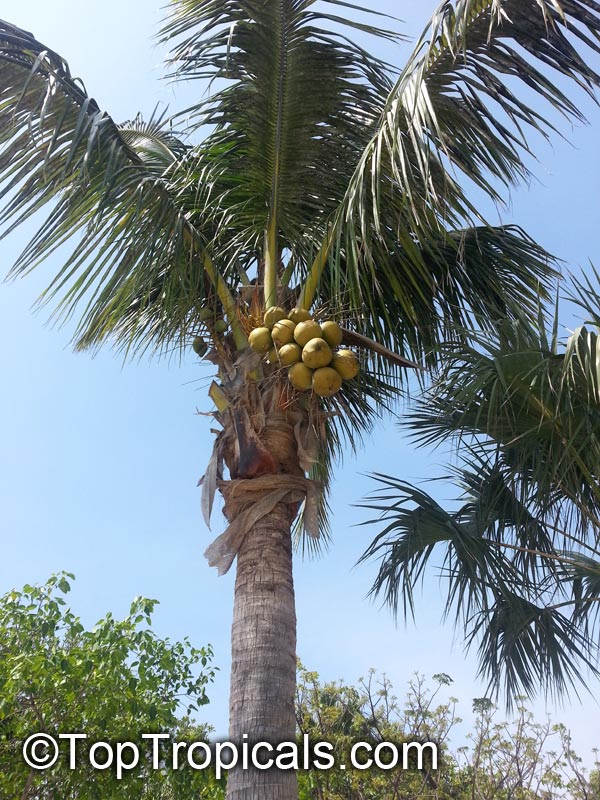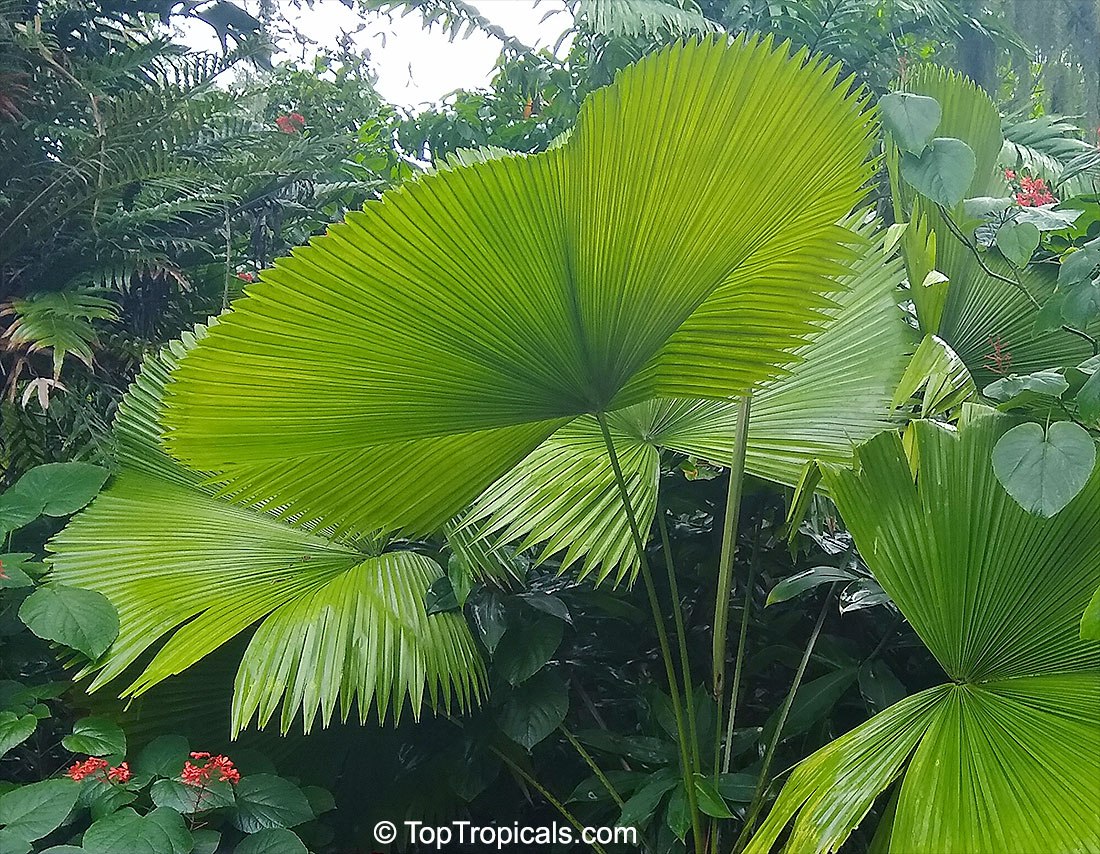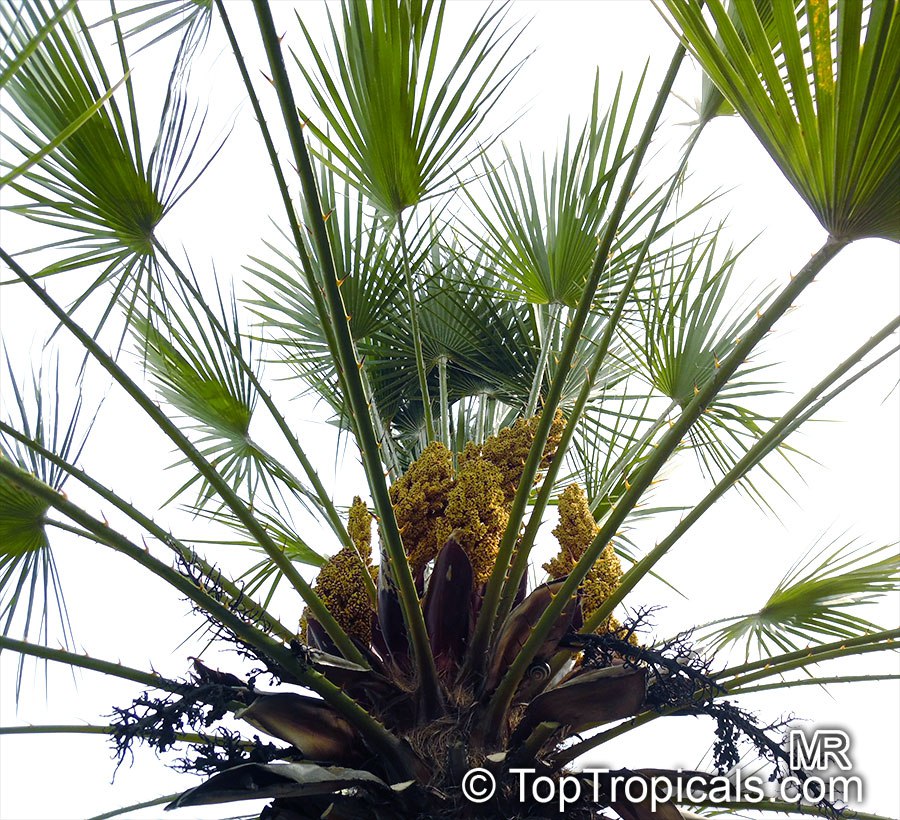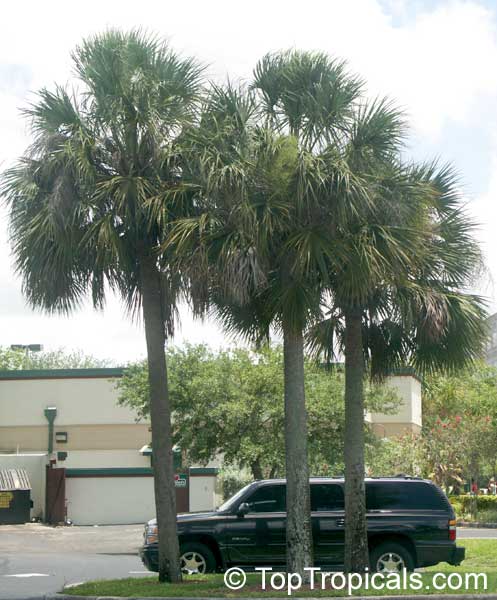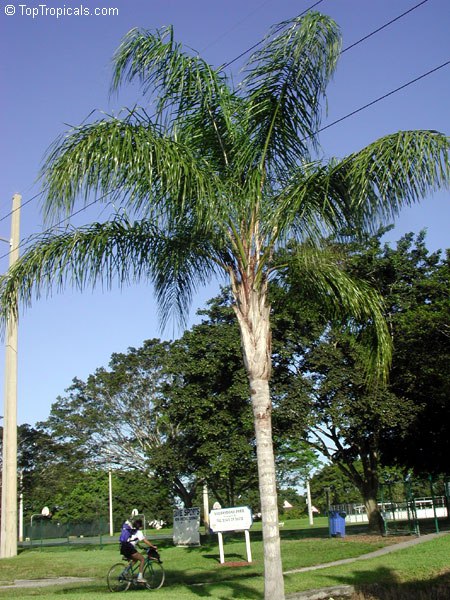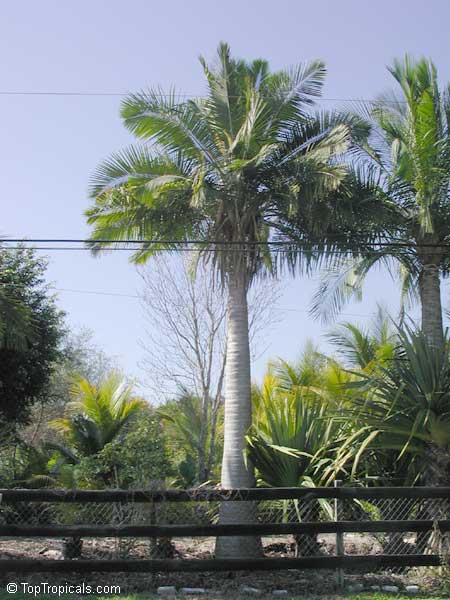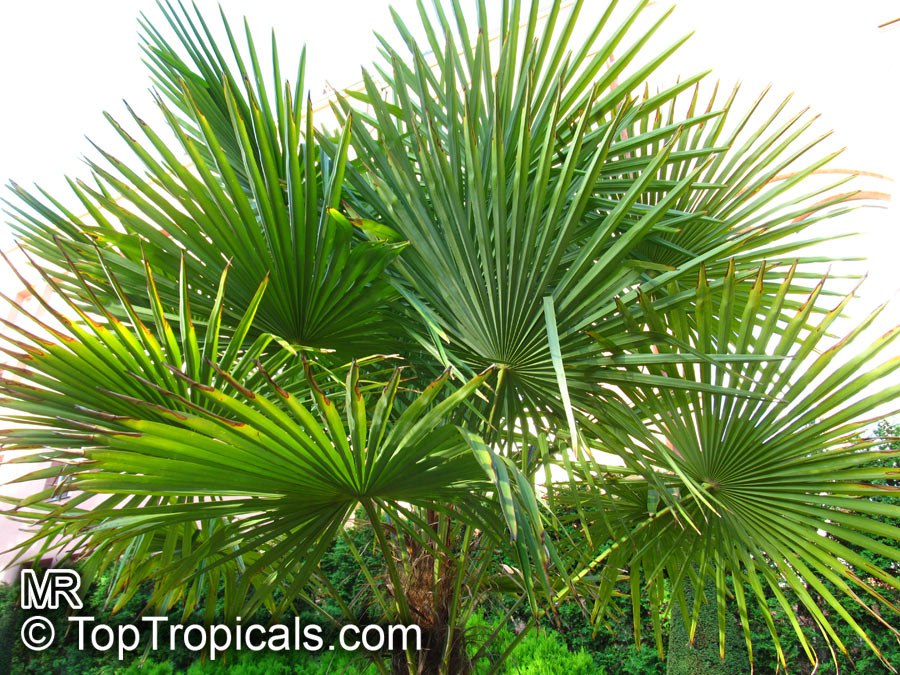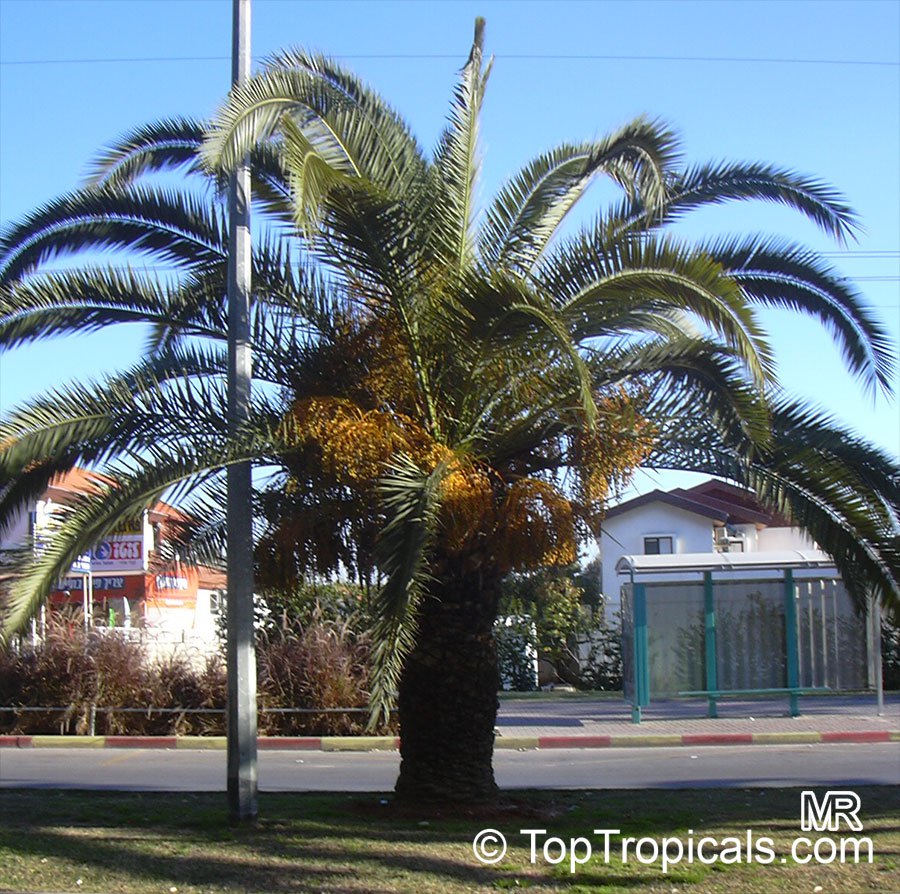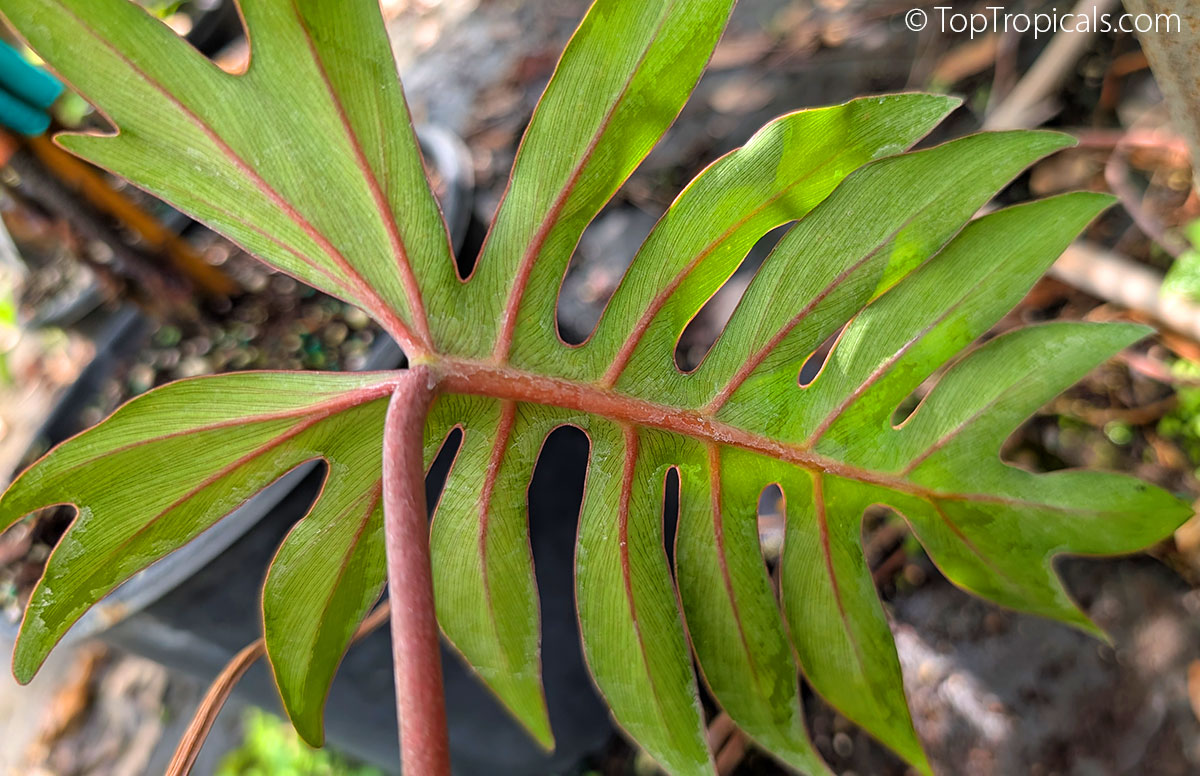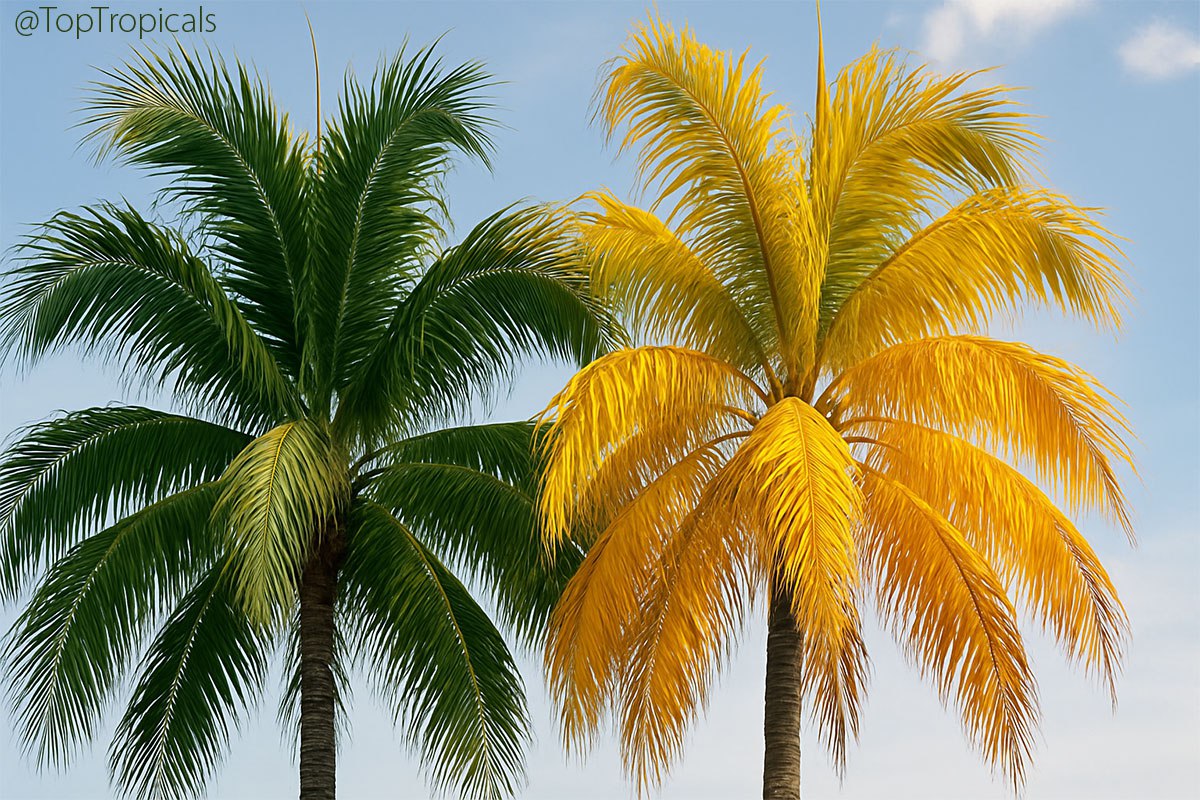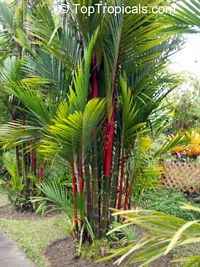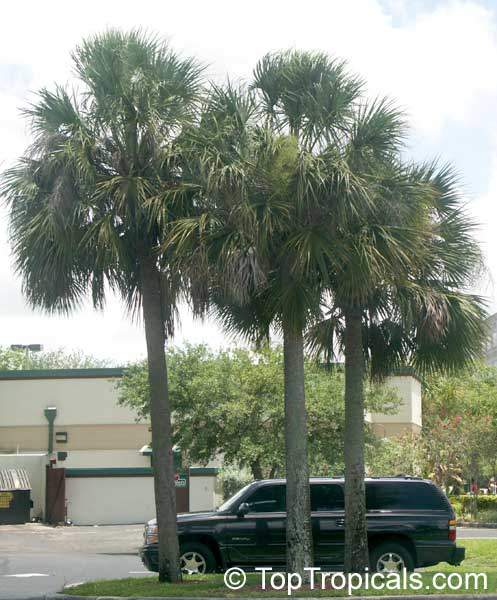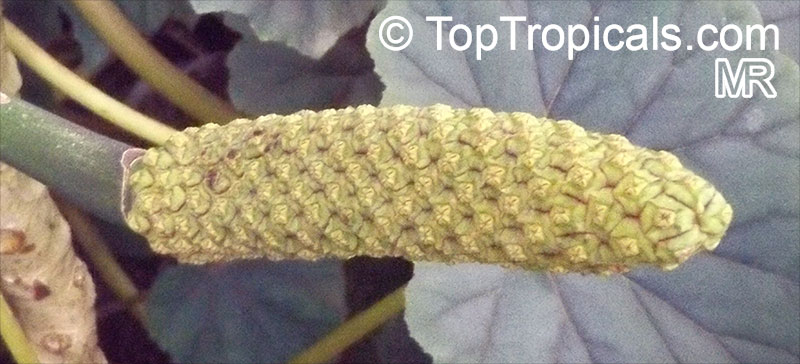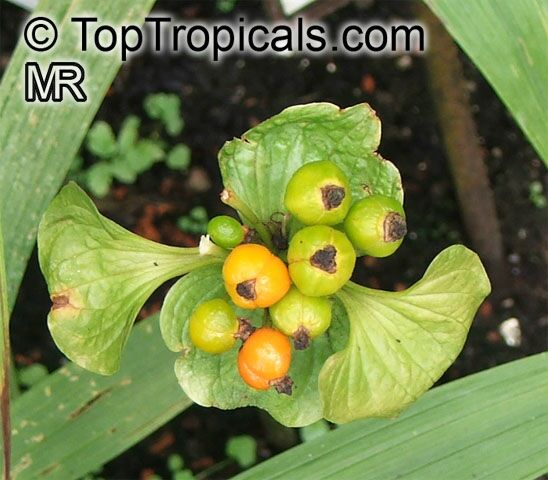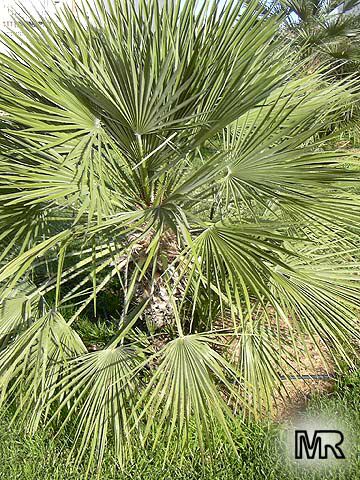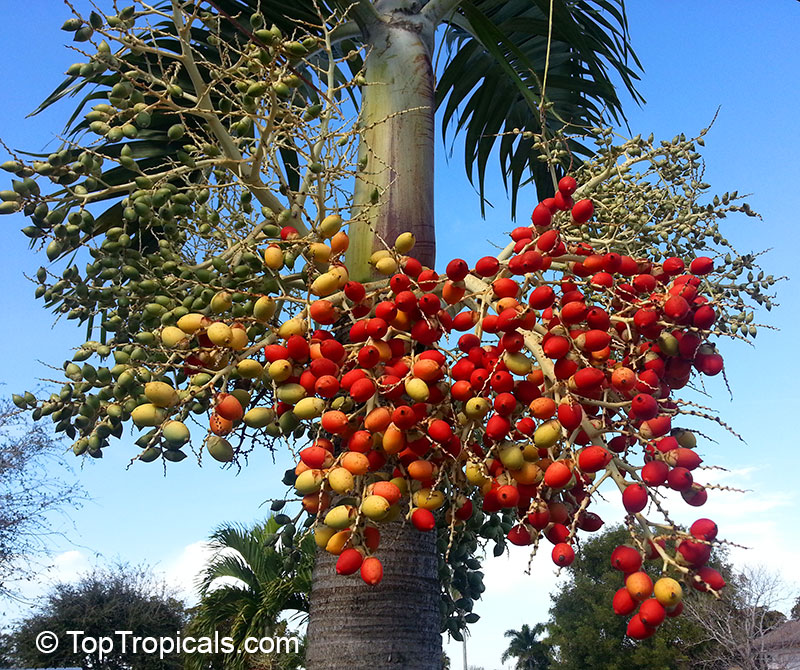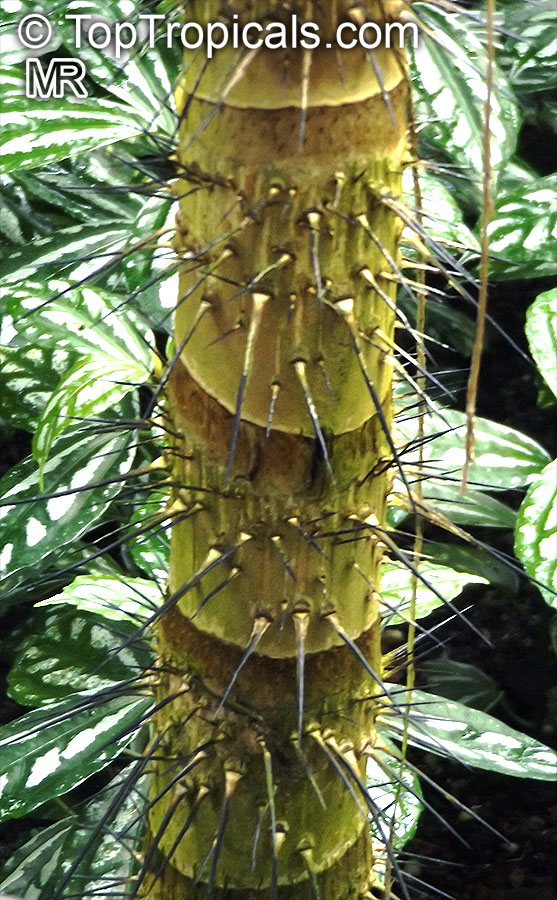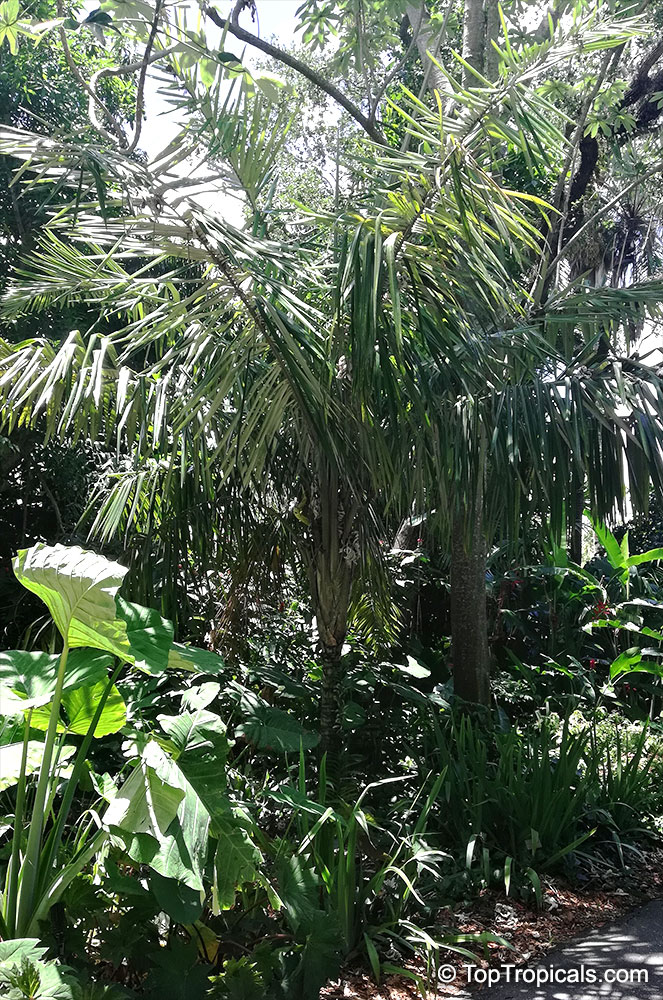Detailed plant profiles: 241 plants found
Sabal palmetto
Family:Arecaceae / PalmaeSabal Palm, Cabbage Palm





See detailed plant profile in new window:
https://toptropicals.com/catalog/uid/sabal_palmetto.htm
Carludovica palmata
Family:Cyclanthaceae
Panama Hat Plant, Toquilla Palm




See detailed plant profile in new window:
https://toptropicals.com/catalog/uid/carludovica_palmata.htm
Tacca palmata
Family:Dioscoreaceae
Palm-leaved Tacca



 Tacca palmata
Tacca palmata (Palm-leaved Tacca), native to Malaysia, is a small plant that usually grows between 2-5 ft in height. This unusual looking plant requires partial shade or semi-shade, as well as regular waterings to ensure optimal growth. The flower petals are a unique combination of pale purple, green, and yellow, surrounded by a clover-like arrangement of green bracts. It is an ideal choice for Zone 10-11 as it prefers to grow at a temperature above 55F.
When growing Tacca palmata in a pot, it is essential to ensure ample drainage. During colder months, make sure to give extra protection to the plant such as placing a pot in a sheltered area or bringing it indoors to a warmer environment. Keeping a regular watering schedule and providing the adequate amount of shade and nutrition will help keep the Tacca palmata in great condition. Make sure to fertilize the soil every few weeks during the growing season and prune any dead leaves or branches. With the right care and attention, Tacca palmata will thrive in gardens and pots alike.
See detailed plant profile in new window: https://toptropicals.com/catalog/uid/tacca_palmata.htm
Acoelorrhaphe wrightii
Family:Arecaceae / PalmaePaurotis, Silver Saw Palmetto, Everglades Palm






It is best to keep the plants moist and then gradually reduce the amount of water as the plant matures. If you are in a cold region and want to grow this plant in a pot, you will need to make sure it is in a well-draining location. The pot should be placed in a semi-shaded area and mulch should used around the base of the pot. Regular watering and feeding should also be given throughout the growing season.
Overall, Acoelorraphe wrightii (Paurotis) is a great palm to grow in USDA zone 9-11. It requires full sun or semi-shade and regular water to thrive, making it an excellent choice for any garden, especially near a seaside location.
See detailed plant profile in new window:
https://toptropicals.com/catalog/uid/acoelorrhaphe_wrightii.htm
Adonidia merrillii, Veitchia merrilli
Family:Arecaceae / PalmaeChristmas Palm




See detailed plant profile in new window:
https://toptropicals.com/catalog/uid/veitchia_merrilli.htm
Aiphanes horrida, Aiphanes aculeata, Aiphanes caryotifolia, Martinezia truncata
Family:Arecaceae / PalmaeDevil Palm, Ruffle Palm, Spine Palm






A solitary, showy spiny small tree. In the wild it grows 9-15 feet tall with a stem diameter of 2-4 inches. The epicarp and mesocarp of the fruit are rich in carotene and are eaten in Colombia, while the seeds are used to make candles.
The range of the species is found in forests of Bolivia, Brazil, Colombia, Peru, Trinidad and Tobago and Venezuela. The species is cultivated as an ornamental throughout the tropics.
Also known as Devil Palm, Corozo, Cocos rura, Mararay, Corozo, Macaguita, Marara, Macahuite, Corozo del Orinoco, Corozo anchame, Mararava, Cubarro, Chonta, Chascaraza, Charascal, Corozo chiquito, Corozo colorado, Pujamo, Gualte, Chonta ruro, Pupunha xicaxica, Coyure palm, Ruffle palm, Aculeata palm and Spine palm.
Scientific Synonyms - Caryota horrida, Aiphanes aculeata, Euterpe aculeata, Martinezia aculeata, Martinezia caryotifolia, Marara caryotifolia, Aiphanes caryotifolia, Tilmia caryotifolia, Bactris premorsa, Aiphanes premorsa, Martinezia truncata, Aiphanes truncata, Martinezia elegans, Aiphanes elegans, Marara bicuspidata, Martinezia ernestii, Aiphanes ernestii, Martinezia killipii, Aiphanes killipii, Aiphanes orinocensis.
See detailed plant profile in new window:
https://toptropicals.com/catalog/uid/aiphanes_aculeata.htm
Allagoptera caudescens
Family:Arecaceae / PalmaeBuri Palm




 Allagoptera caudescens
Allagoptera caudescens is a large, upright,
palm growing up to 5-10 feet tall in its native habitat. It prefers full sun and regular watering, although it can tolerate some drought. It is an excellent choice for seaside gardens as it is extremely salt tolerant, making it perfect for areas with wind and salty air. This slow-growing species can be grown in USDA Zones 9-11 and requires moderate water for best results.
In colder regions, outdoors, the Buri Palm does best with winter protection or in a container, as temperatures below 20°F can damage the plant. When growing this species in a container, it is recommended to use a high quality potting mix, making sure it stays well drained, as soggy soils can lead to root rot. During the growing season, water your Allagoptera caudescens regularly, allowing the top few inches of the soil to dry out in between waterings. Apply a balanced liquid fertilizer every few weeks during the active growing season for optimal growth.
See detailed plant profile in new window: https://toptropicals.com/catalog/uid/allagoptera_caudescens.htm
Detailed plant profiles: 241 plants found 